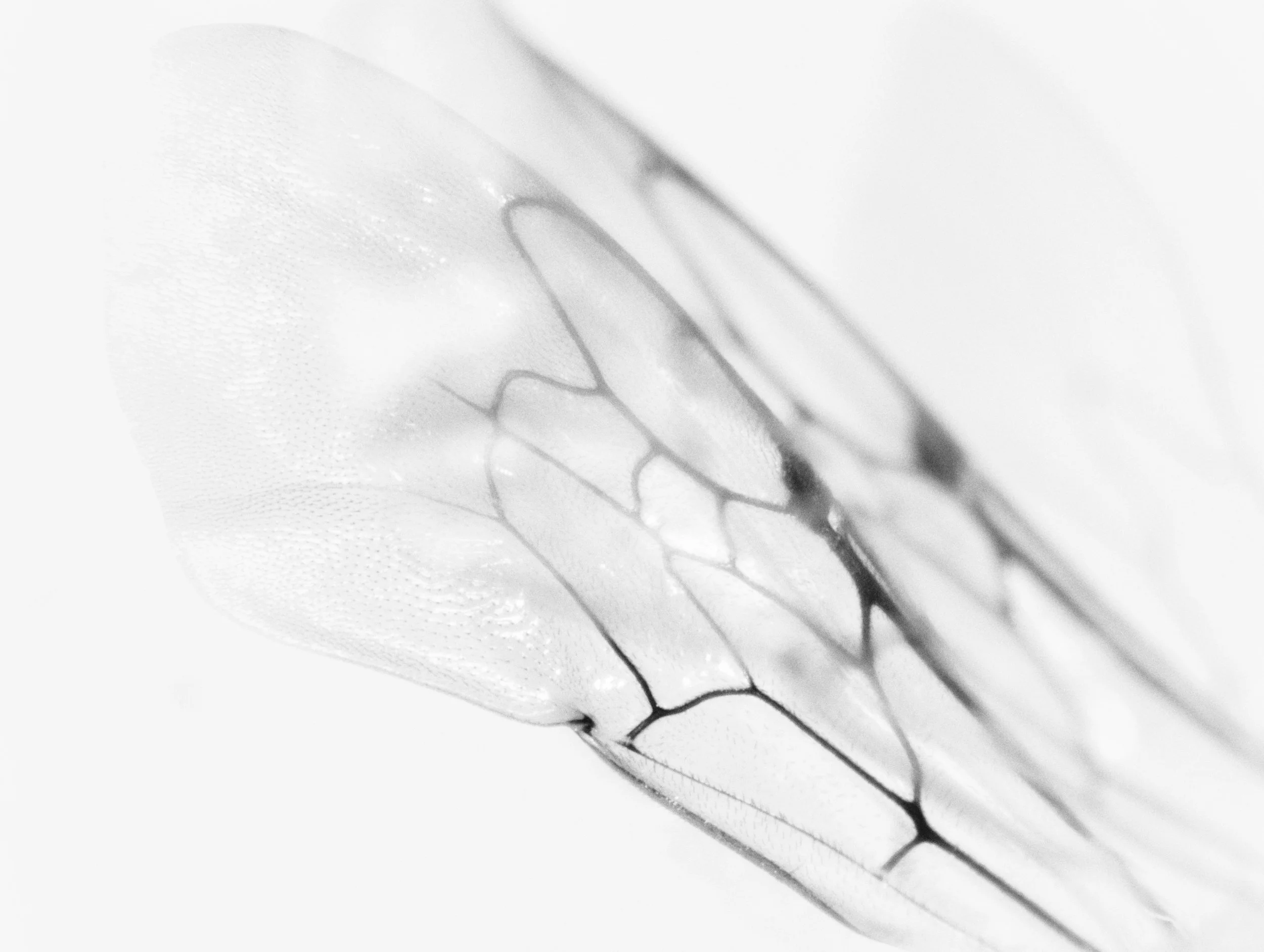Diadasia australis wing
Artist: Sarah Red-Laird
Title: Bee Habitat in Cyanotype 46
Location: 777 Bison Ranch, South Dakota
Project: Bison & Bee Habitat
Bee(s) in cyanotype: Diadasia bee wing print
Materials: Cyanotype, barnwood
Field Season: 2023
Composed: 2024
In the summer of 2022 I met the bison and their people at 777 Bison Ranch. My goal was to collect bee pollen for two days (for a project I was working on) and then continue on down the road. But I became stuck in a tar pit of wonder and I couldn’t move.
I ended up taking refuge at the ranch for about a week. Mimi, Moritz, Cody, and Justin were so kind, hospitable, and interested in my work.
I threw my project out the window and started devising a whole new way to look at the landscape.
In 2019 researchers found that the 777 Bison Ranch, unique for their approach utilizing adaptive multi-paddock grazing, boasted improved fine litter cover, improved water infiltration, two to three times the available forage biomass, improved plant composition, and decreased invasive plant levels and bare ground, relative to both light and heavy continuous grazing (Hillenbrand et al, 2019).
We believe the aforementioned attributes of bison grazing could provide excellent habitat for bees, and we would like to deepen our understanding of this dynamic.
We plan to understand the potentially synergistic or mutualistic interactions between honey bees, native bees, and bison by installing multi-year vegetation and pollinator monitoring areas at the 777 Bison Ranch. These efforts will examine:
Bee nesting frequency – examine the presence/absence of soil nesting bee sites in areas grazed by bison,
Bee habitat – identify the full complement of flowering forb species in the study area, and determine which forbs support pollinators while avoiding consumption by bison,
Bee communities – comprehensive sampling the of native bee species (including soil, stem/twig, wood, hive, and cavity nesting bees) using different passive and active trapping methods,
Pollen availability and nutritional content in flowers (joint project with USDA Tucson Bee Lab).
Learn more about 777 and their holistic practices here.
The 777 Bison Ranch is host to a plethora of native bees. Below is is an example of some of the bees we’ve seen out on the ranch. This set of data we collected on the ranch in 2023. Some of my favorite bees are in the genus Diadasia. This are our sunflower bees, cactus bees, and chimney bees! One of my favorite finds in 2023 was a Diadasia australis who had built a “chimney” nest among some Echinacea flowers. This bee co-evolved with bison on the plains and seems to love the flowers that bison at 777 are uninterested in grazing. Bison on this ranch leave a diversity of flowers on the landscape for their little bee friends, a fascinating coexistence behavior. Diadasia australis may be the most cuddly bee at 777, see the picture below and let me know if you agree!
BGO & Bee Regenerative Data Collection: Sarah Red-Laird
Data Analysis and Visualization: Dr. Autumn H. Smart
Study Design: Sarah Red-Laird and Sarah Gardner
Taxonomy: Sarah Gardner
USGSBIML Team



